|
|
THE ASPENS
Quaking Aspen, Bigtooth Aspen, Cottonwood,
and Balm-of-Gilead
Salicaceae, The Willow Family

The willow family has many tree and shrub species. World-wide there are about 335 species
in two genera, Salix (willows)
and Populus (aspens). The family is most abundant in temperate regions of
the northern hemisphere with about 120 species in North America. Aspens are the most
important part of the willow family, at least in the Lake States. Leaf stems, called
petioles, are flattened (except in Balm-of-Gilead) which allow the leaves to flutter in
even the slightest breeze. Male and female flowers occur on separate trees (so there are
male and female trees). All members have male flowers arranged in catkins that bloom in
the spring. Soon after, the female flowers ripen into tiny seeds that float through the
are on milkweed-like fluffs. Cottonwood gets its name from these "cottony" seeds
that are known for clogging up window screens. Although Populus is often a
heavy seeder, regeneration is most commonly from root suckers.
All family members have smooth, light-colored bark on trunks that are under a foot in
diameter and on upper branches of large trees. Populus is short-lived,
rapid-growing, and sun-loving. It commonly invades open ground but eventually gives way to
tree species more tolerant of shade (a process called plant succession).
 QUAKING ASPEN (Populus
tremuloides)
QUAKING ASPEN (Populus
tremuloides)
Other
Names: Popple, Poplar, Aspen, Trembling Aspen, Mountain Aspen
Key ID Features: Leaves, Bark, Buds

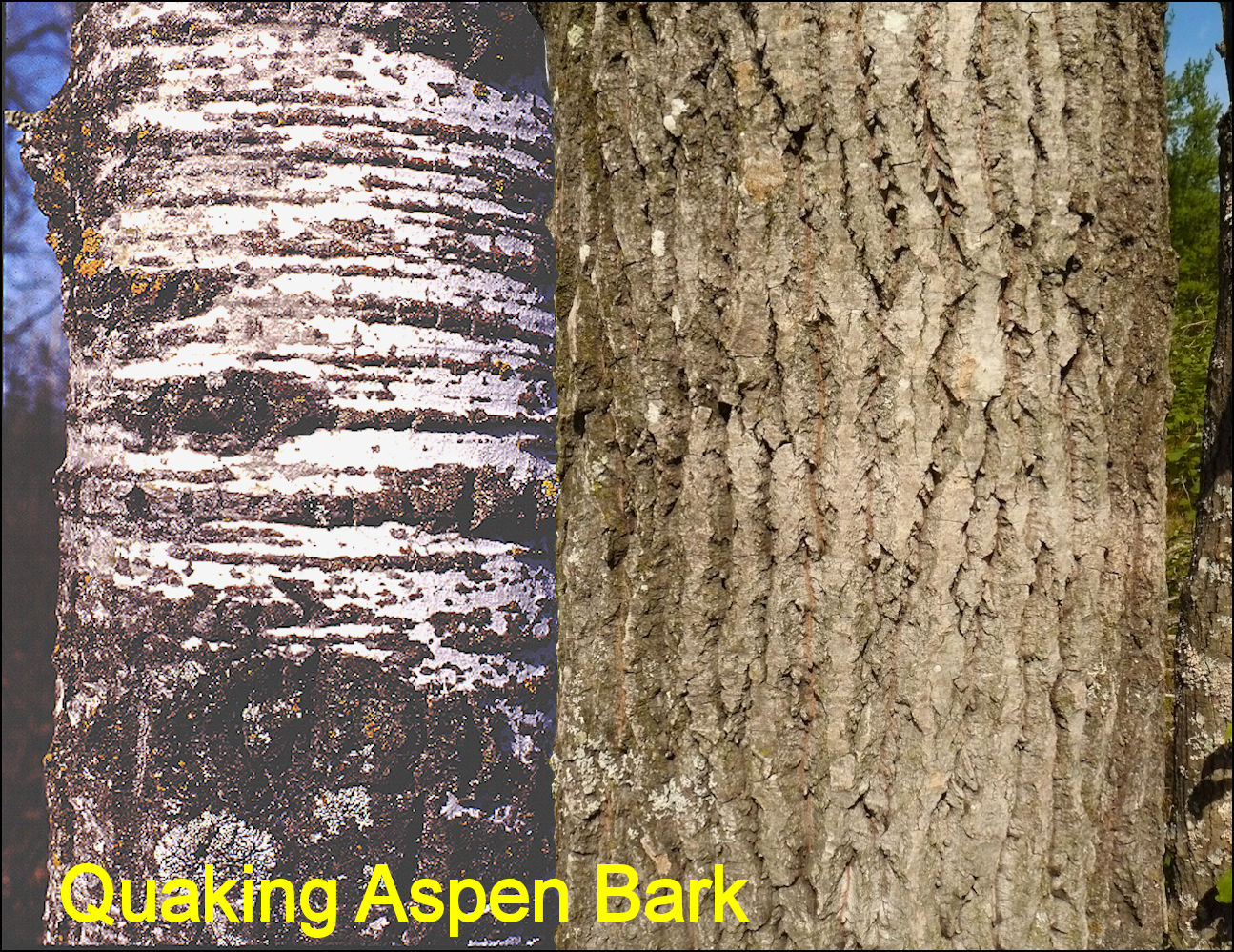
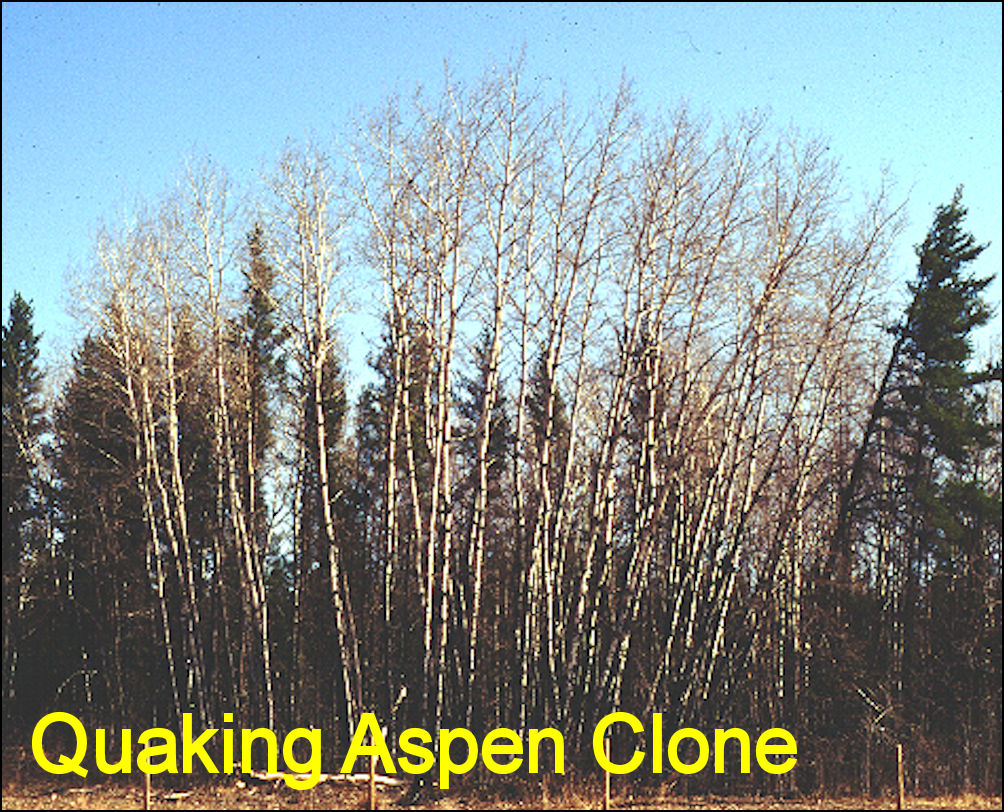
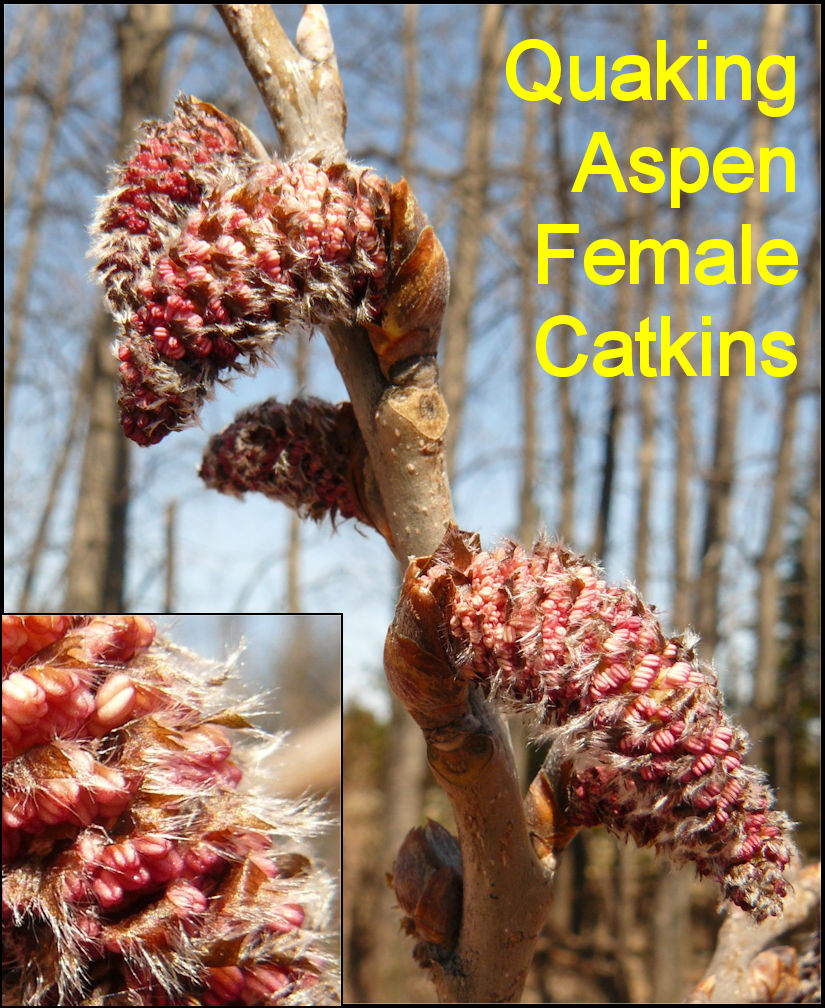


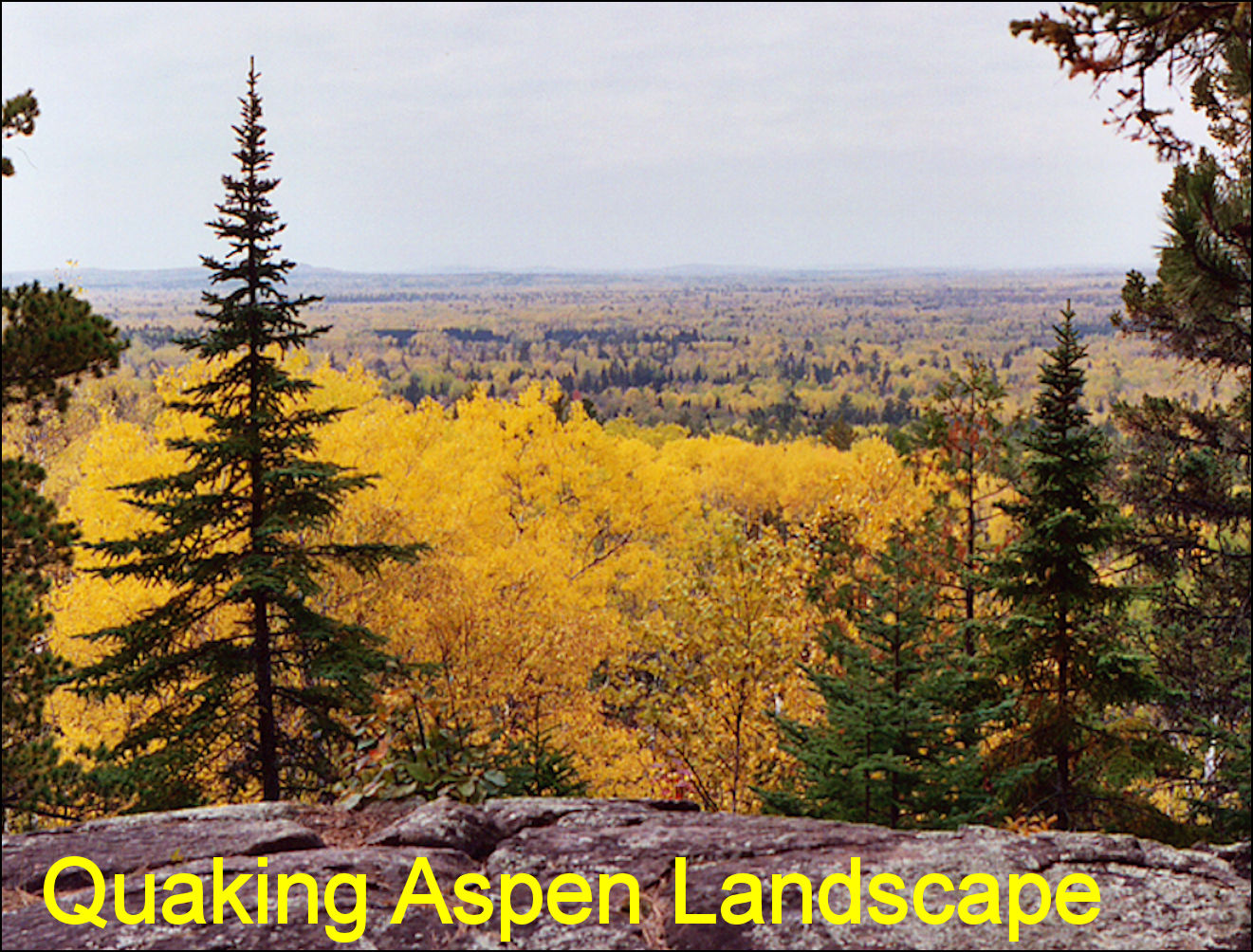

LEAVES are 2-4 inches long with small
teeth along the margins. Leaf STEMS are flattest on
quaking aspen, giving the tree the characteristic it is named after. BARK can be snow
white, light gray, or a yellowish green. Black "beards" often form on the BARK
below junctions with branches. BARK on large, old trees turns medium-gray and develops
deep furrows. From a distance, quaking aspen is often mistaken for paper birch. TWIGS are
light gray. The pointy BUDS are shiny brown and about a quarter-inch long and have
several bud scales. Flower buds are much larger than
the leaf buds. Aspen seldom grow as single individuals (although it looks like they
do) but rather in clones from common root systems.
Rapidly growing suckers from clearcut or storm-damaged stands are sometimes thought of as
brush rather than young trees. Aspen commonly grows in stands with few other tree species.
Trees can grow to HEIGHTS of 70-75 feet and 2 feet in DIAMETER, but not usually live much
longer than 60-70 years. Quaking aspen is one of our most important trees for game
species. Common pests: forest tent caterpillar, large aspen tortrix, leafminers, mourning cloak, tussock moths, aphids, Septoria canker, aspen shoot blight, Hypoxylon canker, Phellinus, beavers, leaf scorch.
 BIGTOOTH ASPEN (Populus
grandidentata)
BIGTOOTH ASPEN (Populus
grandidentata)
Other
Names: Popple, Poplar, Large-toothed Aspen
Key ID Features: Leaves, Bark, Buds
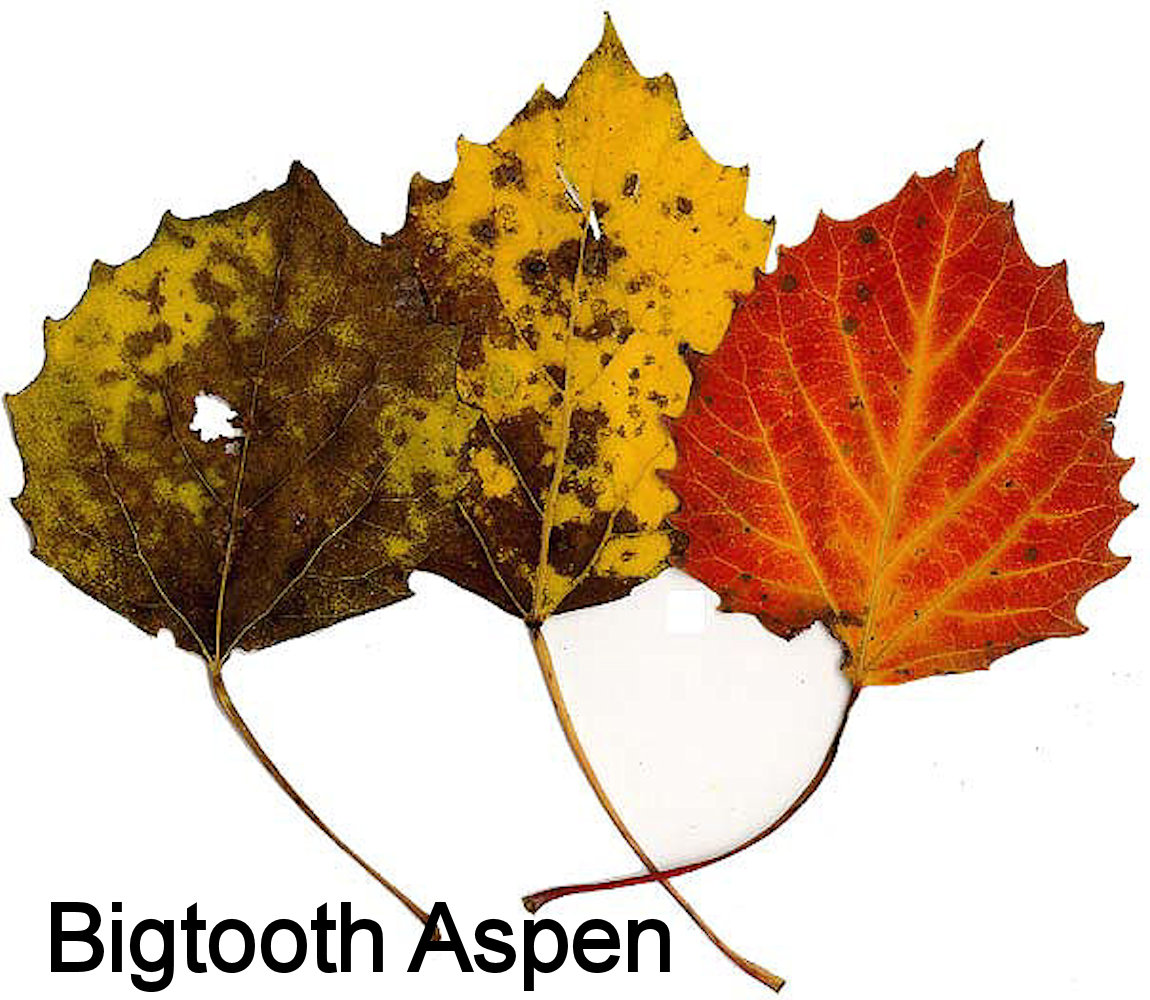




LEAVES from bigtooth aspen are similar
to quaking aspen, except the margins have large
teeth up to a quarter-inch long. In the spring, the LEAVES often have a woolly-like fuzz.
BARK is usually more bronze-colored or olive-green, except on large trees. Terminal BUDS are larger than quaking aspen, but not so
sharply pointed. Light gray twigs are a little stouter.
Bigtooth aspen is a larger and longer-lived tree than quaking aspen. It usually occurs on
better SOILS, such as silt loams. Bigtooth aspen is also a clonal species but also occurs with white pine, paper
birch, and other upland hardwoods. Common pests: forest tent caterpillar, large aspen tortrix, leafminers, mourning cloak, tussock moths, aphids, Septoria canker, aspen shoot blight, Hypoxylon canker, Phellinus, beavers, leaf scorch.
 BALM-of-GILEAD
(Populus balsamea)
BALM-of-GILEAD
(Populus balsamea)
Other Names: Balm, Bam,
Balsam Poplar, Black Poplar, Tacamahac
Key ID Features: Leaves, Bark, Buds, Habitat
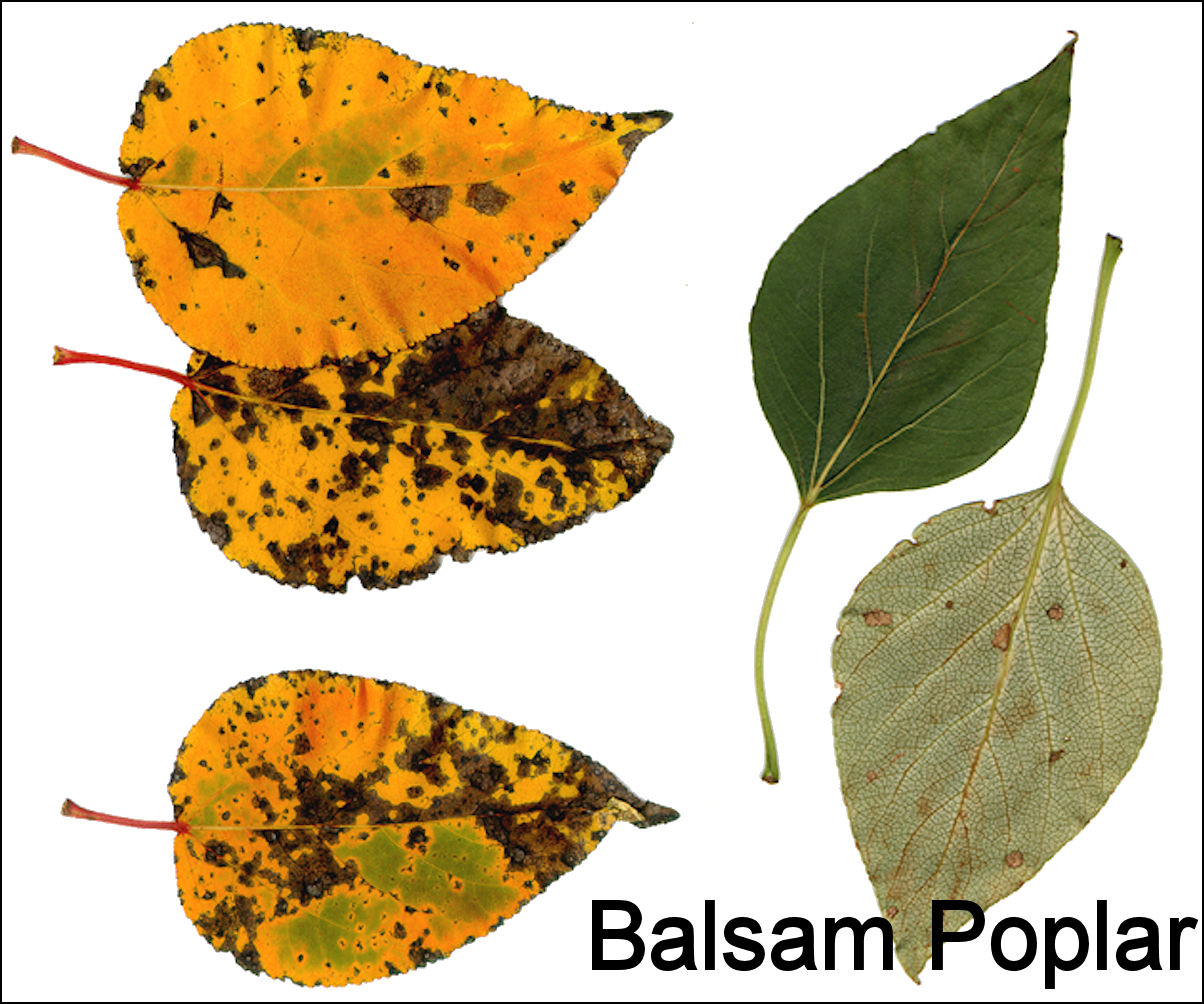
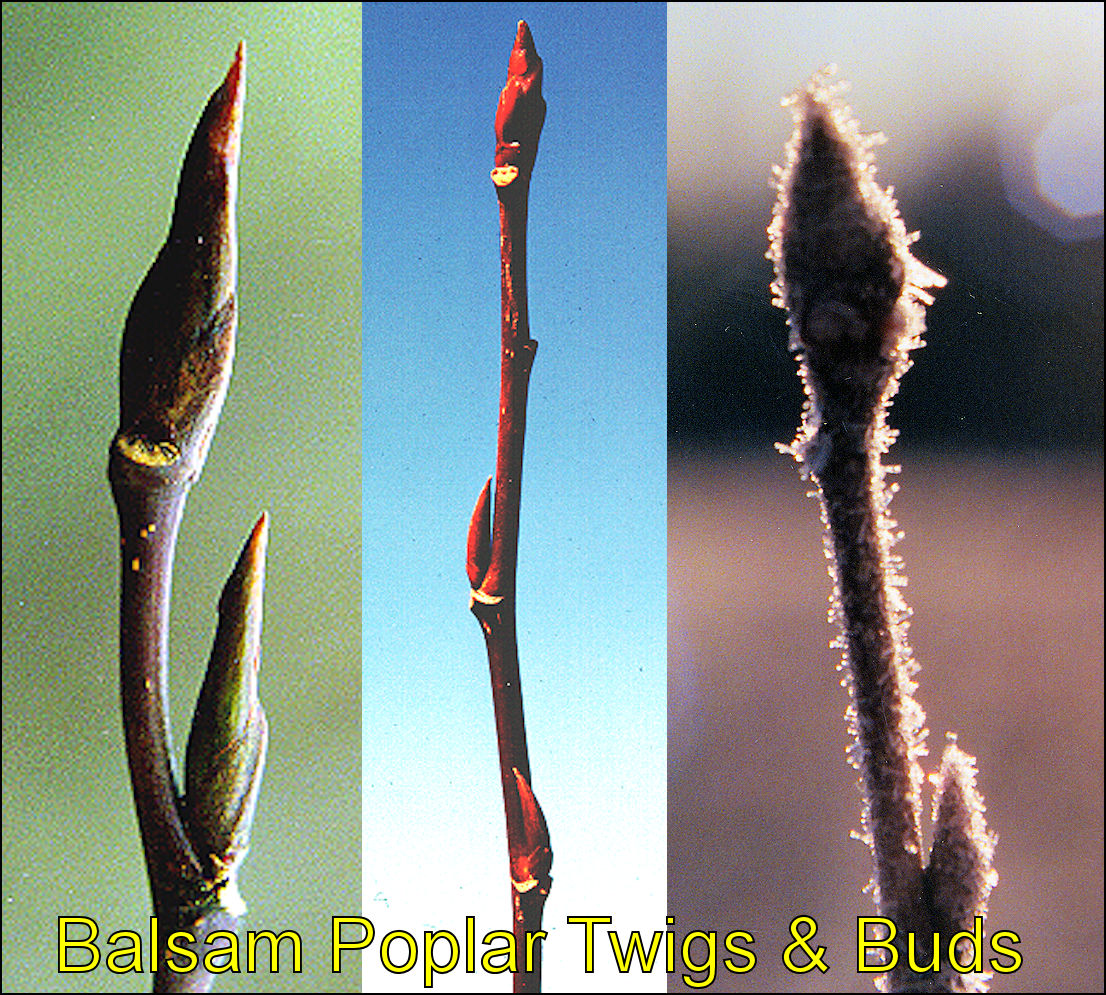
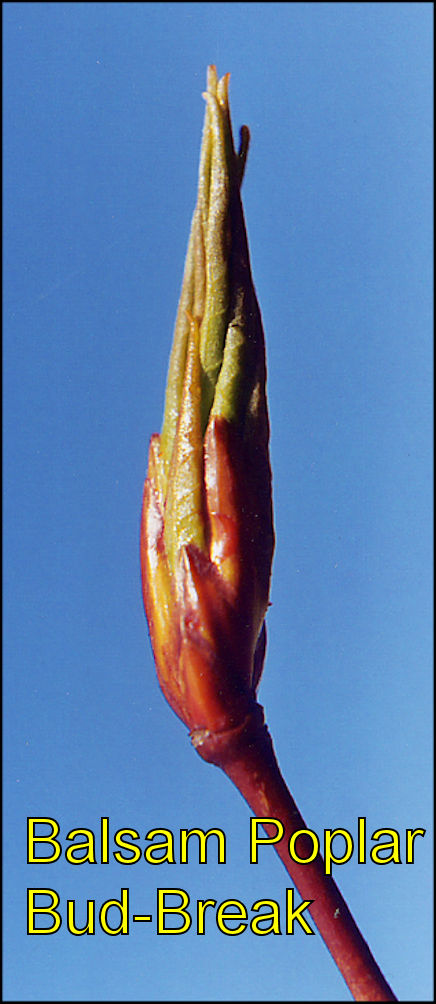
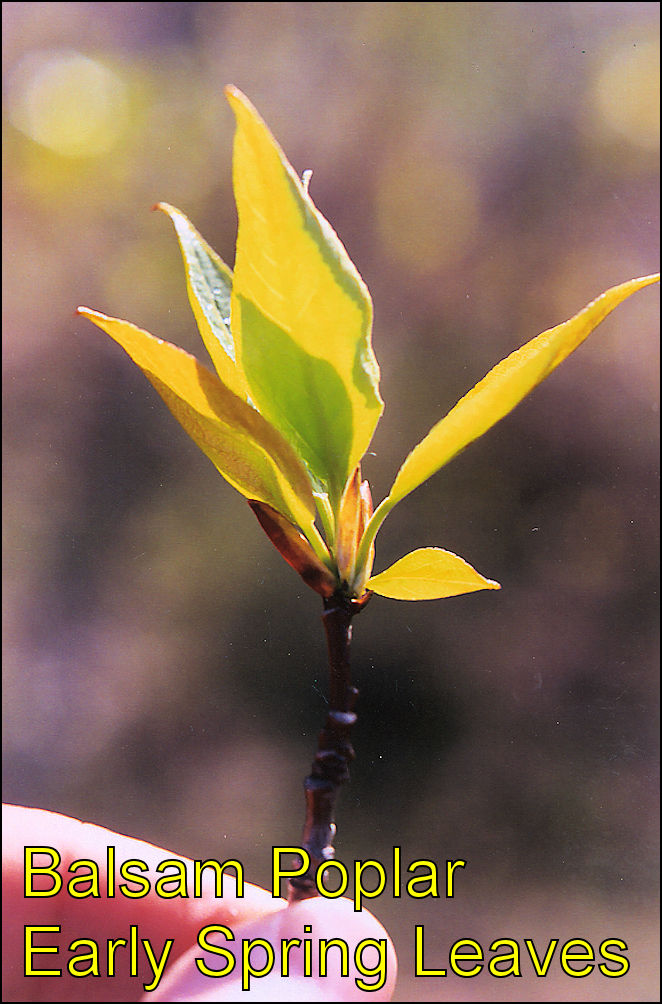
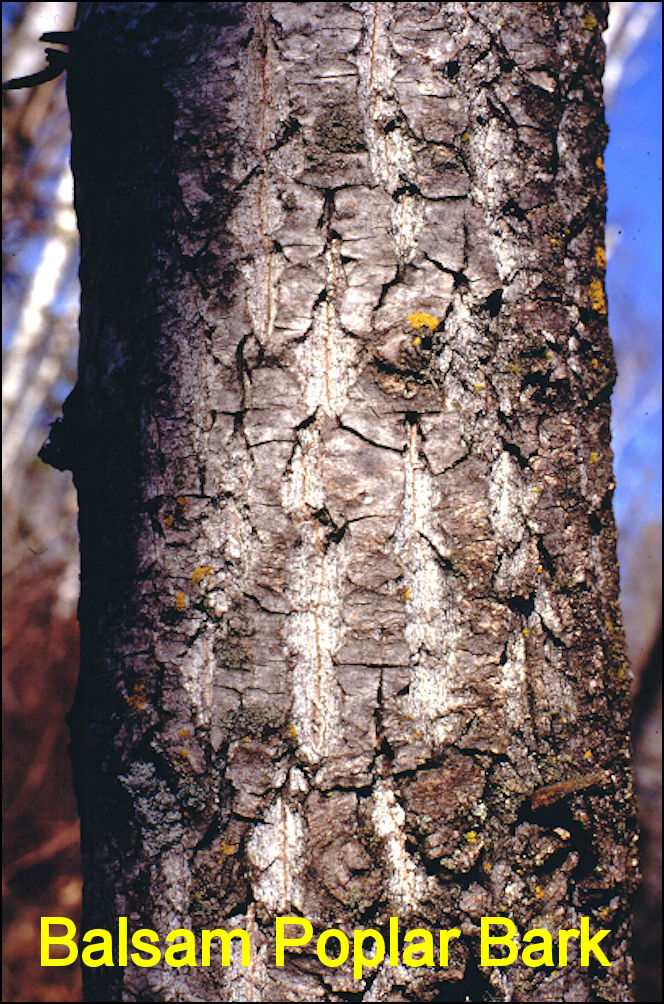
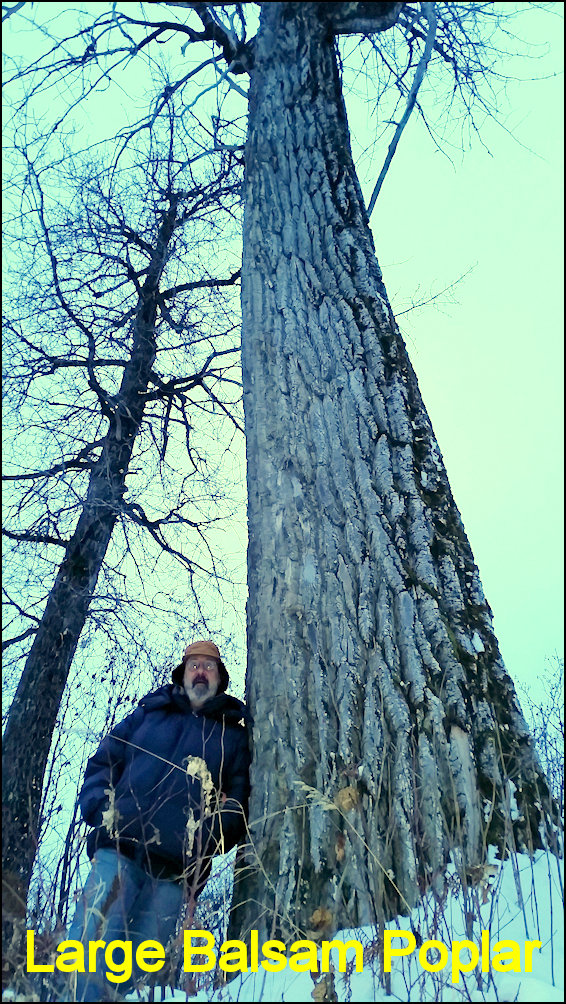

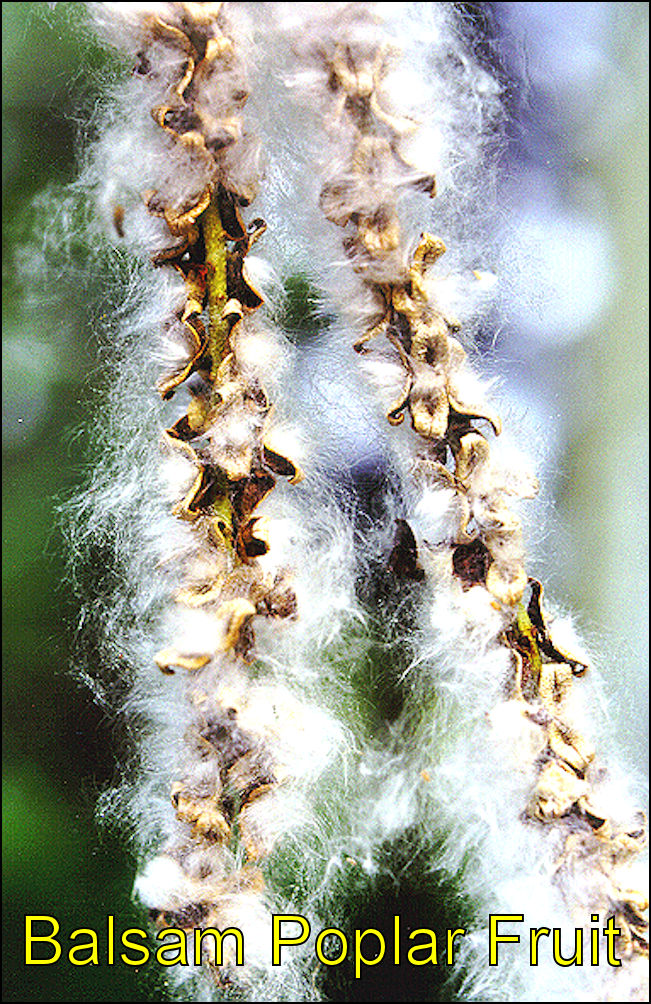
Balm is the WETLAND member of
the aspen group. The LEAVES, however, are different. They have round leaf
STEMS (petioles) and very finely-toothed leaf margins.
Beginning fairly early in the season, the LEAVES usually develop a rusty or bronze cast,
which can often be seen in the crown from a distance. The BARK is very similar to
aspen. As the size increases, the BARK forms a plate-like texture that eventually
grows into deep fissures. TWIGS are light gray, except the most recent twigs growth which may be more
brownish. The pointy BUDS, especially the terminal BUD, are quite long and, when squashed, are very sticky with a
distinct "balsamy" smell to them. Balm is clonal and often grows on the edge of wetlands and waterways but can invade open fields like
quaking aspen. Usually growing in PURE STANDS, balm will also ASSOCIATE with ash,
aspen, red maple, balsam fir, and white spruce.
Common pests: large aspen tortrix, Septoria canker.
 EASTERN
COTTONWOOD (Populus deltoides)
EASTERN
COTTONWOOD (Populus deltoides)
Other
Names: Cottonwood, Eastern Poplar, Poplar, Southern Cottonwood
Key ID Features: Leaves, Bark, Buds, Size
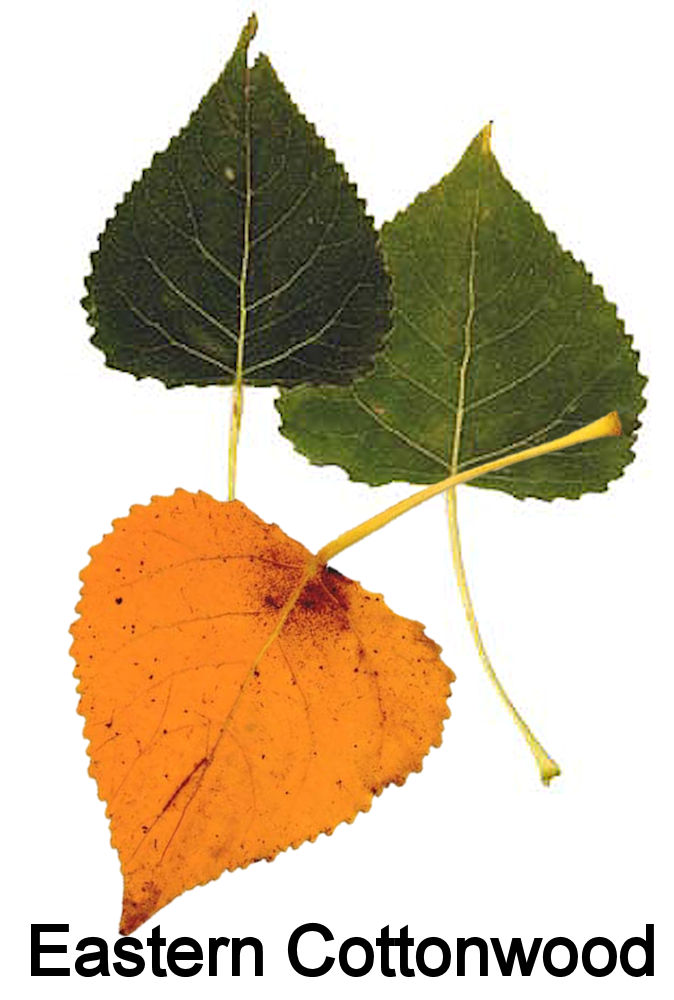
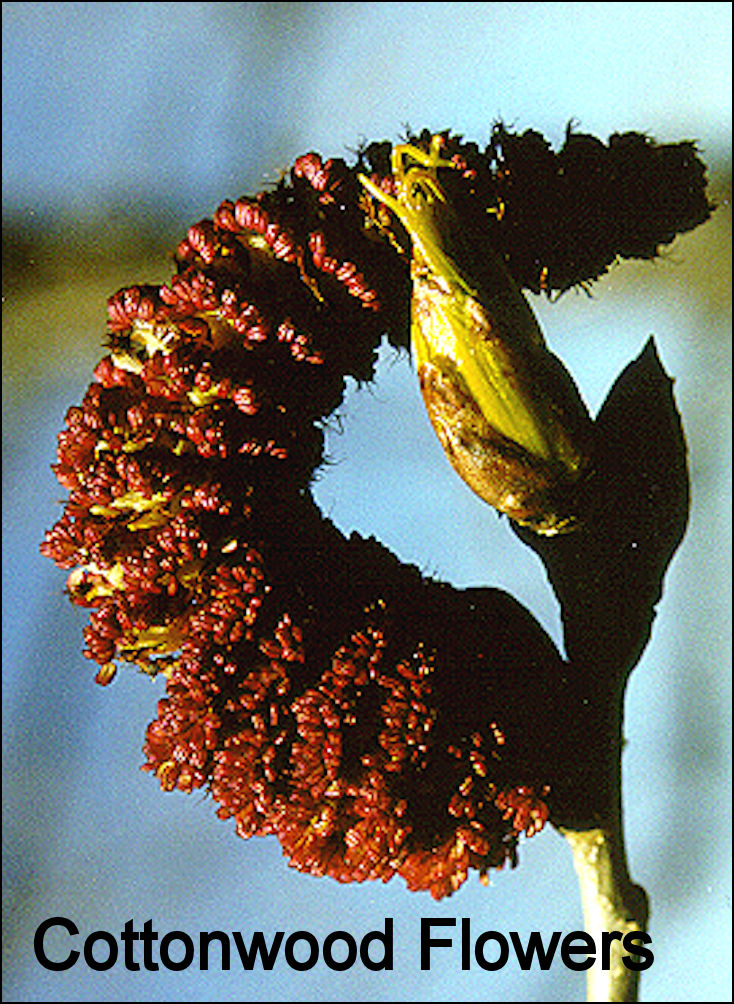
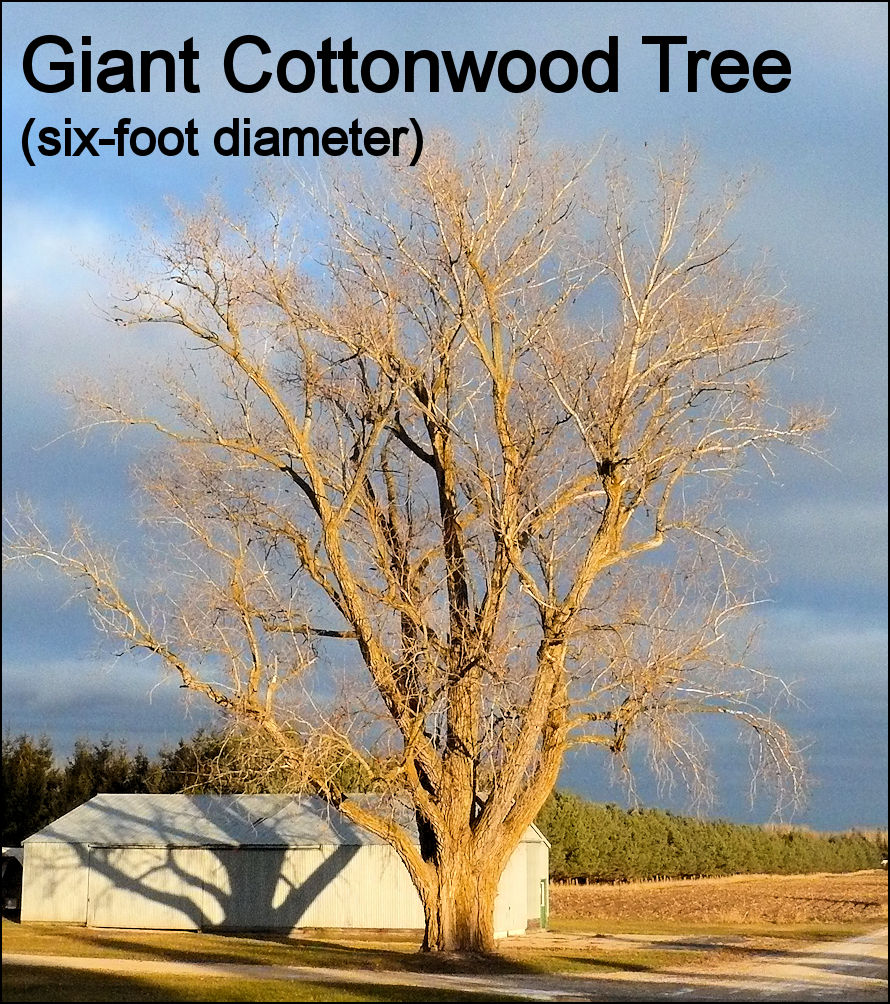
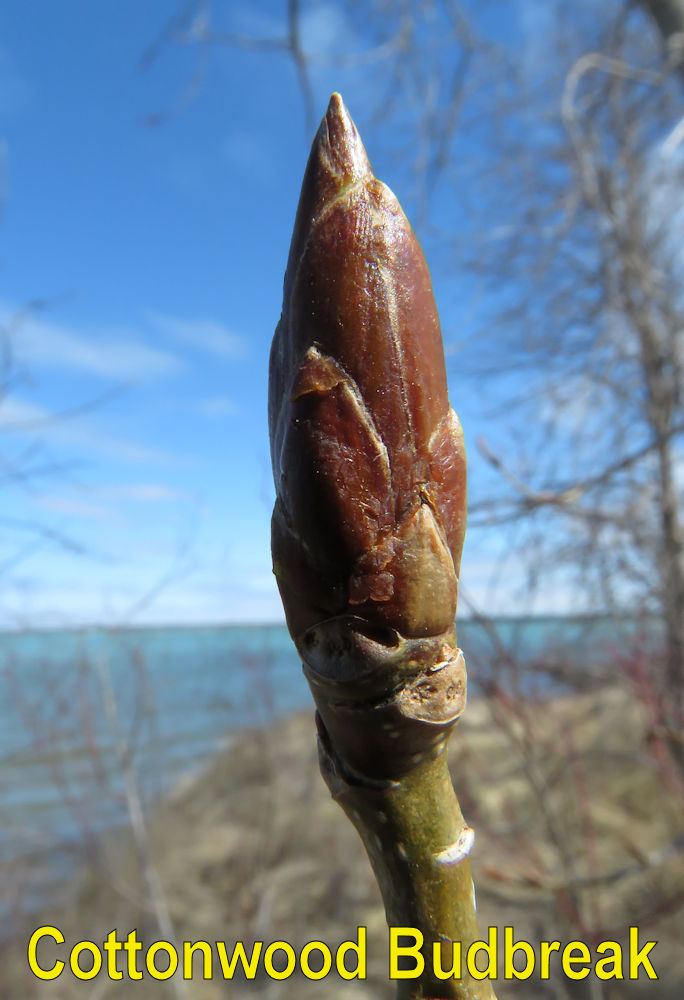
Cottonwoods have distinctive triangular
or "deltoid" LEAVES. The LEAF base is
straight across or angled somewhat back toward the twig. Margins are toothed and the leaf is 3-5 inches long. TWIGS are
yellowish-brown and have knobby leaf scars.
BUDS are quite similar to balm-of-Gilead. BARK loses its smoothness earlier
than the other Populus species. Older trees have gray-brown fissures
that run deep into thick BARK. Cottonwoods can reach great DIAMETERS. It is
not uncommon to find trees with trunks up to 5 or 6 feet across. HEIGHTS are
commonly 70-90 feet. CROWNS are often large and spreading when open grown in old
fields and around homesteads. Cottonwood can also be found along river
courses.
Click on blue to return to
the Summer Deciduous Key or Winter
Deciduous Key.
Click HERE to return
to the home page.
A note about the images on this website, click here.
This site created and maintained by Bill Cook, MSU Extension Forester for the Upper Peninsula of Michigan. Editing and modification is ongoing. Submit suggestions, questions, and corrections to cookwi@msu.edu or call 906-786-1575.